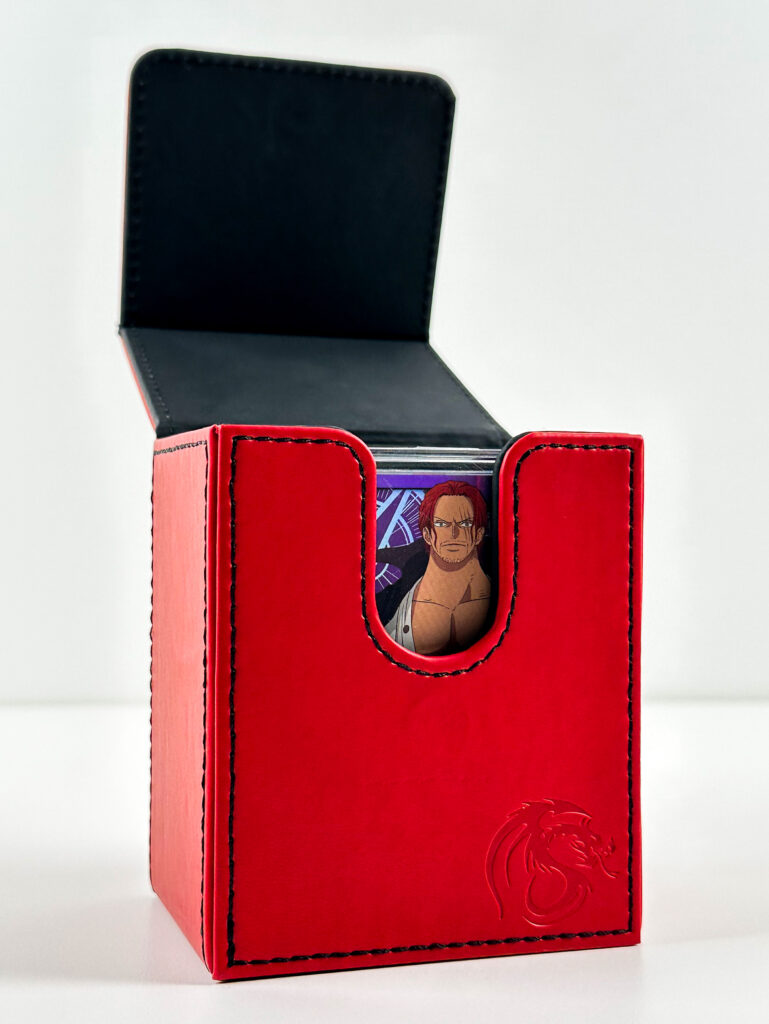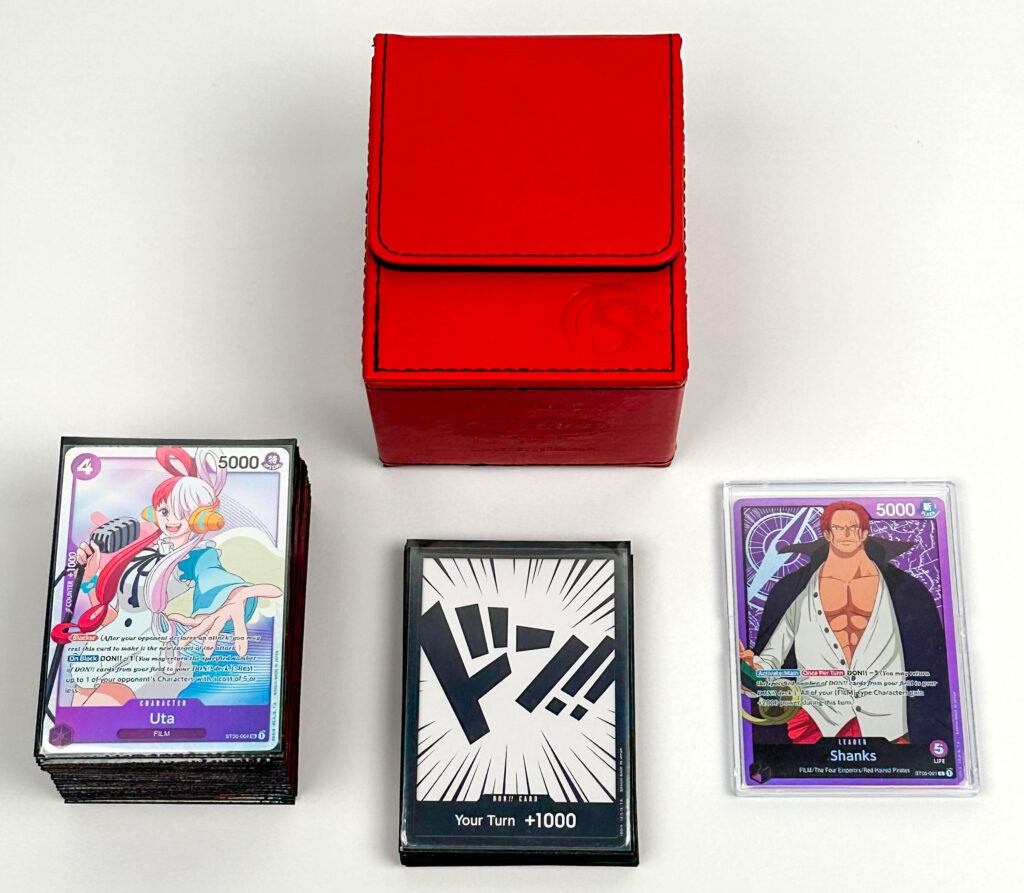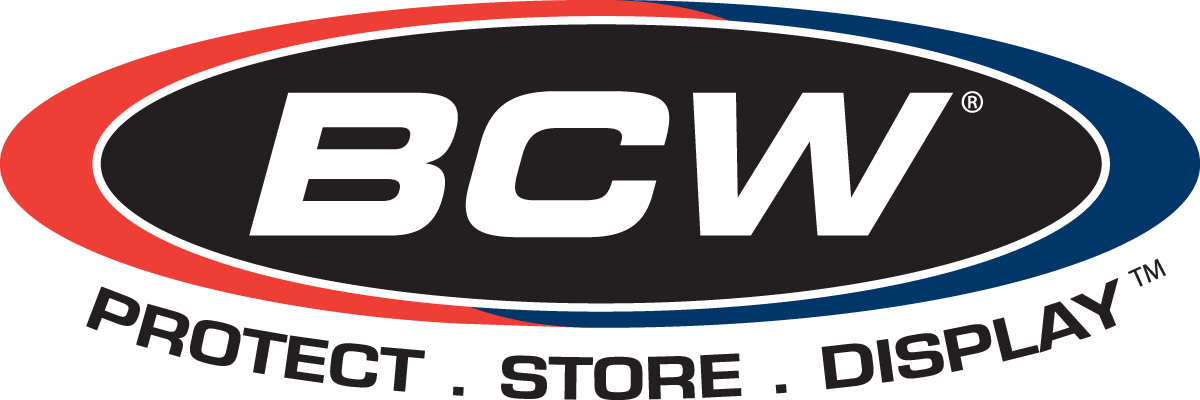One Piece Trading Card Game from Bandai
Based on the long-running manga and anime, the One Piece Card Game released to a market hungry for the product. The game features an automatic resource mechanic more in line with digital ccgs like Hearthstone, albeit with a few extra tricks. Overall, what could have easily been a quick cash-grab game has several interesting designs. The Official Site has more information for new players.

To begin, each player needs a Leader card. This will have 1 or more colors, which determine the cards available to use when building a deck. Next, you will need a deck of exactly 50 cards. As mentioned above, the Leader’s colors determine what colors you can include in your deck. You are limited to 4 copies of a card by card number. Finally, you will have a DON!! deck of exactly 10 cards. Although they may look different from set to set, all DON!! cards are functionally the same.
There are 3 types of cards that make up a deck: Characters, Events, and Stage Cards. The main use for characters is battle. You can have up to 5 characters in play at a time. Events are usually played during the main phase (if they have a Main effect), but if it has the Counter icon, can be played in reaction to an opponent’s attack. Events activate their effect then go to the trash area. Finally, Stage cards have special effects that can make your deck more powerful. You can have only 1 stage card in play at a time.
The basic goal of the game is to attack the opposing leader to remove cards from your opponent’s life area while they do the same to you. If you attack the other leader while they have 0 cards in the life zone, you win. Likewise, any time a player has 0 cards in their deck, they lose.
The turn consists of 5 phases. First, during the Refresh phase, any rested (or tapped) cards become active, and any DON!! cards attached to leaders or characters return to your Cost area. Next, you have the Draw phase. As expected, you draw a card. The first player skips this step during their first turn. Next, you have the DON!! phase. You take 2 DON!! cards and place them in your cost area. The first player places only one during their first turn. The Main phase has several actions that can happen, and forms the bulk of the turn. When you finish your Main phase, play goes to the End phase, which acts as a clean up step for end of turn effects and the like. The next player then starts their Refresh phase and continues from there.
There are 4 basic actions that can happen during the Main phase: playing cards, activating effects, giving DON!! cards, and battling. To play a card, you rest a number of DON!! cards in your cost area equal to the number shown in the top left corner of the card. You can activate any abilities on cards that are playable in the Main phase. Most of these will have a cost, so be sure to read the card carefully. You can take 1 active DON!! card from your cost area and place it under your leader or one of your characters, giving it a bonus of +1000 power until your next Refresh phase.
Battles take several steps. First, you rest an active leader or character and declare your attack. You can target the opposing leader or a rested character. Next, if the opponent has a character with the Blocker effect, they can activate it. Then, the defending player can play Counter abilities on characters or events. Finally, you compare power totals. If the attacker has equal or greater power than the defender, 1 of 3 things can happen. On defeat, characters are trashed. If you attacked a leader, remove one card from the life area, or if there are no cards left, you win. However, if the defender has higher power, the attacker loses, but there are no other penalties. At this point, any “end of battle” effects stop, and the turn continues.

Given the demand (and price!) of cards, it’s important to take care of your deck. I suggest double sleeving the cards, and using different colors for your main deck and the DON!! deck. Leaders can be sleeved as well, although something more robust like a mini snap will add extra protection and help keep the leader separate from other cards. Given the small size of the decks, the best choice for a deck box is a Deck Case LX. These also have the advantage of holding a mini snap if you use one for your leader. If you have several decks, a Prime X4 Box should work best, although it won’t hold mini snaps.
Overall, One Piece is a surprisingly deep game with several interesting decisions that must be made every turn. If you get the chance, it’s definitely worth a look, even if you dislike the series.
